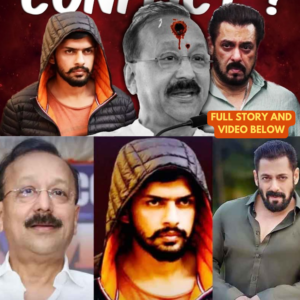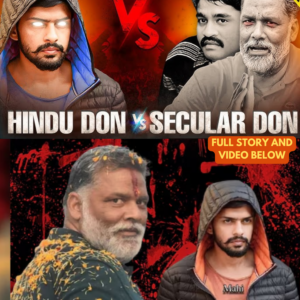Lawrence Bishnoi’s Protected Stay in Sabarmati Jail: Why State Police Can’t Interrogate Him
Lawrence Bishnoi has emerged as one of India’s most notorious criminals, instilling fear across multiple states. His activities and connections have led to an extensive criminal network, making him a focal point of concern for law enforcement agencies. Despite his incarceration in Sabarmati Jail, the complexities surrounding his case continue to baffle authorities and citizens alike.
At the heart of the issue is the Union Ministry of Home Affairs, which issued a significant order under Section 2681 of the Code of Criminal Procedure (CrPC). This provision restricts the movement of high-profile prisoners, especially those whose transfer might threaten public order and security. Bishnoi’s situation has highlighted the challenges law enforcement faces in dealing with such dangerous individuals.
The order preventing Bishnoi’s transfer has become a major obstacle for state police who wish to interrogate him regarding ongoing investigations. This legal safeguard, enacted in August 2023, was initially set to expire a year later. However, given the persistent threat he poses, it has since been extended to August 2025, further complicating any attempts to question him.
Authorities fear that moving Bishnoi could lead to violent clashes between rival gangs or incite acts of revenge, creating chaos in public spaces. Such concerns are not unfounded, as Bishnoi’s influence extends beyond prison walls, with potential repercussions for public safety.
As the legal frameworks designed to protect the public clash with the need for accountability, the situation raises questions about the balance between individual rights and societal safety. Bishnoi’s protected status has become a contentious issue, prompting discussions about the adequacy of current laws in dealing with high-profile criminals.
Law enforcement agencies are left grappling with their inability to directly confront Bishnoi, even as they pursue investigations that could yield crucial evidence against him. This has led to frustration among police forces, who find themselves limited by the very laws meant to ensure public safety.
The question remains: how long will this standoff continue? With each passing day, Bishnoi’s criminal enterprises may remain unchecked, further emboldening him and his associates. The longer he remains insulated from interrogation, the more challenging it becomes for authorities to dismantle his operations.
Public opinion on Bishnoi’s protected status is mixed, with some advocating for a review of the legal measures in place. There are calls for more robust frameworks that allow law enforcement to operate effectively without compromising public safety. The stakes are high, and the potential for violence is ever-present.
In conclusion, the case of Lawrence Bishnoi is emblematic of a broader issue within the Indian legal system. It underscores the need for a reevaluation of how high-profile criminals are managed, balancing the imperative for security with the rights of individuals. As the situation evolves, it will be critical for authorities to find a way to navigate these complex waters to restore public confidence in law enforcement.
News
Amitabh Bachchan behaved badly with his daughter-in-law Aishwarya Rai | Amitabh IGNORE Aishwarya Rai
In recent weeks, a wave of speculation has emerged suggesting that all may not be well between former Miss World Aishwarya Rai and the iconic Bachchan family. This speculation has captured the attention of fans and the media, as rumors…
Amitabh gave a message to daughter-in-law Aishwarya Rai, said “No matter how your house is, it is yours”
Amitabh Bachchan, the iconic figure of Indian cinema, has a longstanding tradition of engaging with his audience through social media. He often shares reflections on his life, career, and personal philosophies. Recently, a particular post of his has stirred significant…
Salman Khan vs Lawrence Bishnoi | Why it is Happening? |
Salman Khan vs Lawrence Bishnoi | Why it is Happening? | The tension between Bollywood superstar Salman Khan and gangster Lawrence Bishnoi has become a hot topic in recent news. This clash is not just a simple feud; it embodies…
Lawrence Bishnoi Vs Pappu Yadav | Bishnoi Targets Anti-India Mafia?
In the ever-evolving landscape of India’s criminal underworld, a new chapter is unfolding, marked by the dramatic confrontation between notorious gangster Lawrence Bishnoi and the infamous Bihar don, Pappu Yadav. This rivalry has escalated recently, with Bishnoi’s gang issuing a…
LAWRENCE BISHNOI VS SALMAN KHAN, PAKISTANI PUBLIC REACTION AFTER NADEEM KHAN VIRAL VIDEO, REAL TV
The recent controversy involving Bollywood superstar Salman Khan and Lawrence Bishnoi has sparked intense discussions across communities, especially concerning allegations of animal cruelty. The speaker, representing a particular community, emphasizes that if there is evidence that Khan has harmed a…
LAWRENCE BISHNOI’S DIWALI GIFT TO PAPU YADAV LIVE, AFTER NADEEM KHAN & SALMAN KHAN, LATEST NEWS
In a recent live discussion, significant attention was drawn to the ongoing tensions surrounding Pappu Yadav and Lawrence Bishnoi, especially in light of recent developments involving prominent figures like Nadeem Khan and Salman Khan. The speaker began by addressing the…
End of content
No more pages to load











